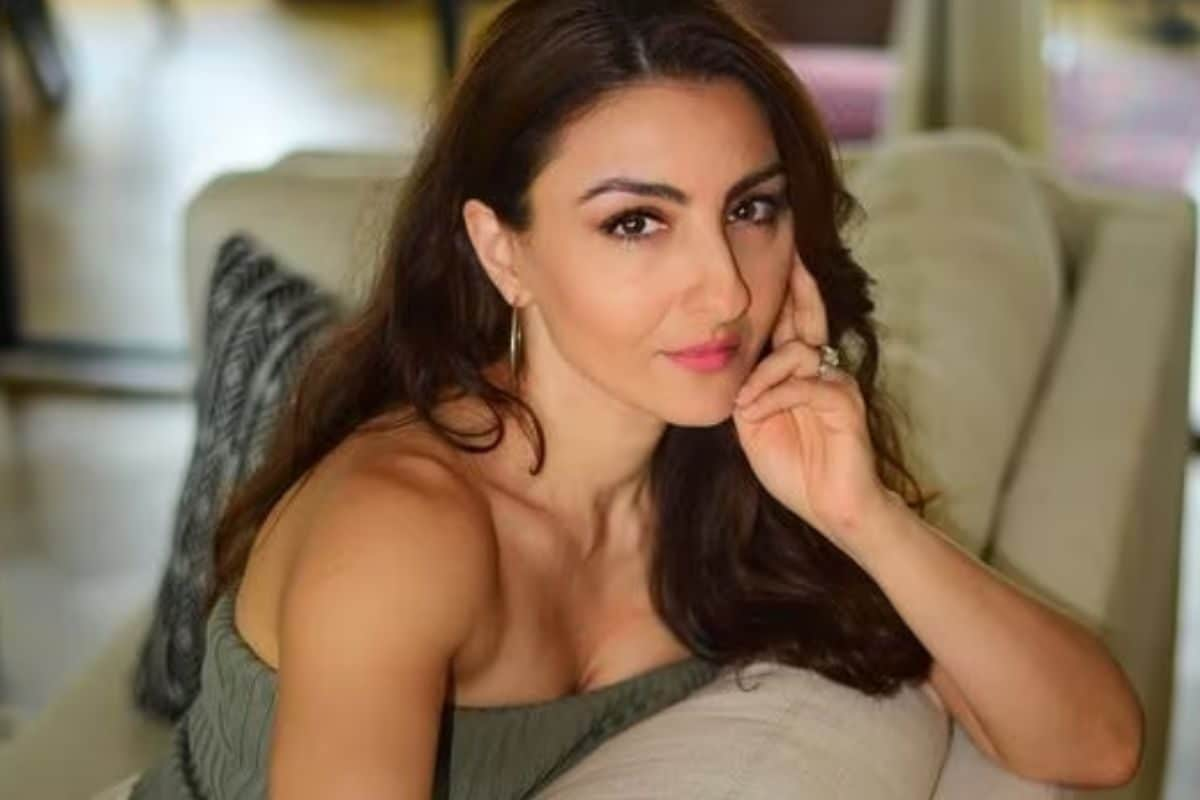KOCHI: When you don’t do well, they say, ‘You are no good’. And when you do too well, they say, ‘Oh, she is not a woman.’” These are the words of Indian professional sprinter Dutee Chand, the winner of two gold medals at the 2014 Asian Junior Athletics Championships.
She was speaking from experience. For, in 2014, she went through a difficult period when she was excluded from the Commonwealth Games and Asian Games. Reason: Hyperandrogenism, or high testosterone levels.

The Athletics Federation of India (AFI) ruled her ineligible for the women’s category, putting an end to her prospects. Dutee’s is not an isolated case. Several woman sportspersons, including Indian track and field athletes Santhi Soundarajan and Pinki Pramanik, have also faced wrongful accusations of being male.
Imane Khelif, the Algerian boxer, was the latest to be caught up in a gender debate following her win against Italy’s Angela Carini during the Paris Olympics on August 1, after Carini pulled out of the game. In the high-stakes sports arena, female athletes battle more than just their opponents; they also face an uphill struggle against deep-rooted societal norms and stereotypes. Traditional notions of femininity, which emphasise passivity, delicacy, modesty, and appeal to the male gaze, are in stark contrast to the aggression, strength, and competitive spirit required of athletes.
If women show such qualities, they are more likely to be labelled deviant, transgender, and manly in sports. Anu Raghavan, an Indian sprinter, shares her experience: “I have heard people commenting that I’m becoming masculine because of my training, or that hormonal changes cause hair growth, which then leads to more comments. I think men are the ones who make such comments more often.
The reality is that not just athletes but many women experience hormonal imbalances. And not just looks, women are also judged based on their dressing style, beauty standards, makeup, etc. This constant judgement is one reason why more women hesitate to enter sports.
We always face accusations, no matter what we do or don’t do.” The victory of Khelif on August 1, despite her delivering a knockout performance, was marred by a deluge of hateful comments and baseless accusations about her gender. Though it did not stop her from making her way to the finals — she fought China’s Yang Liu on Friday — it reignited the broader debate over gender regulation and perception in sports.
World Athletics, the international governing body for athletics, says to be eligible to compete, a person needs to be legally recognised as female or intersex, maintain a serum testosterone level below 2.5 nmol/L for at least 24 months, and continuously keep the testosterone level below 2.5 nmol/L at all times, whether in or out of competition.
Mini Unniraj, a Hockey India coach, says, “When women participate in sports, there can be changes in their bodies and hormone levels. Factors like physical activity, diet, and supplement intake contribute to these changes. I have personally known athletes who didn’t have their periods in their 20s.
Hormone levels naturally fluctuate, and I think this does not define whether they are women or not. Some men have lower testosterone levels. But they are not accused of being transgender or feminine.
” She adds: “All women in sports face rigorous demands far beyond what the average person experiences. Athletes must dedicate themselves entirely to their sport, often foregoing social interactions to focus only on training, performance, and winning. This intense concentration can lead to changes in their bodies.
I don’t know about the scientist part. But as a coach, I believe these factors play a significant role in the physical and hormonal changes observed in female athletes.” Sex verification has a long history.
From visual inspections to physical examinations, chromosome testing, and, eventually, testosterone level testing, this aimed to ensure athletes competed according to their sex. Scholars debate whether natural advantages, such as high testosterone levels, should be considered ‘unfair’ if they occur outside the athlete’s control, which is a never-ending story. Additionally, the link between testosterone and athletic performance is questioned, as some women with high testosterone may have traits like obesity and short stature that hinder athletic ability.
A former Kerala hockey player, Jeffrey Pinheiro, says, “This issue is mainly seen in athletics. In this Olympics, they have already confirmed that she (Khelif) is biologically female. Any natural changes in her hormone levels could be due to various reasons.
It’s an invalid argument when people say a woman is not feminine when she performs extraordinarily. Society as well as international sports organisations must accept that women can achieve this through hard work. Though the federation has its own procedures, and we can’t change that, I believe everyone competes based on their skills.
These bylaws should be reevaluated.” Cricket coach Kevin Peter Oscar highlights the physical and mental challenges female athletes face due to societal stereotypes. He explains, “Through practice, women athletes strengthen their muscles and develop more power than an average female.
It is a fact. But when Vinesh Phogat was near the gold medal, everyone celebrated her as the ‘strong lady.’ However, when she was disqualified, the same crowd hurled negative comments at her.
” This, Kevin notes, is indicative of how society treats women, often reacting without correct knowledge about sports. He emphasises that even those with high testosterone levels must work extremely hard to perform well and win medals. In his opinion, these gender stereotypes not only affect women physically but also take a significant mental toll, leading some athletes to quit sports altogether.
Athlete coach Pinto Mathew shares another view. He says it is important to approach the issue with a broader perspective, considering the feelings and challenges faced by female athletes. “When transgender individuals, who may have greater strength, compete in women’s categories, it can create difficulties for female athletes.
It’s important to recognise that transgender athletes are not at fault, as they lack a separate category to compete in. However, many female athletes I know have expressed the challenges they face when competing against transgender athletes,” he says. According to him, while hormones naturally vary among individuals and training can influence physical changes in female athletes, there is a limit to how much this can impact their strength.
“These complexities need to be carefully considered to ensure fairness in sports.” Indian athlete Nayana James discusses the complexities of gender verification in sports, acknowledging the differences in biological power among men, women, and transgender individuals. She believes that while gender verification rules are necessary to maintain fairness, it is harmful and baseless to define gender based on body type or masculine traits.
And publicly questioning someone’s gender can have a damaging impact on their life. She also emphasises that if there are concerns, there is a proper appeal process that should be followed, rather than making assumptions. “We cannot label someone as transgender simply because they are more powerful than their opponents,” Nayana states.
According to former national shooting coach Sunny Thomas, dsometimes society cannot identify a person’s gender just by looking at them. “Scientific measures are necessary because we cannot judge people based on their appearance. Currently, testosterone testing is the only way to determine gender in the sports arena.
It is really wrong to scrutinise such personal aspects of individuals, but, unfortunately, there are currently no alternatives,” says the Dronacharya Award recipient. Dr Noorul Amin Shahid, consultant of sports medicine, says biological sex and hormonal levels are primary factors in determining the gender in which the athlete should participate rather than their gender orientation, which is more of a self-perception and a psychological factor. He said, “The current regulations in sports are based on the available established scientific evidence, but the scientific evidence itself is a dynamic process that evolves over time with new discoveries.
The sports governing bodies, press, and the public should respect the prevailing rules of sport and the dignity of the athletes. And when they voice their opinion, it should be in a dignified and responsible manner.” According to Dr Harsha P S, sports medicine consultant at SAI - Lakshmibai National College of Physical Education, gender has become a controversial subject.
“The Olympic Committee requires athletes to compete according to the gender they identify with. However, if an athlete identifies as a woman, she must meet the testosterone levels set by the committee. The same rule applies to male athletes,” she explains.
Despite this, the committee has yet to introduce a category for non-binary or transgender athletes, she says. “If an athlete’s testosterone levels fall outside the prescribed range, the committee allows for medical treatment over one year. This is particularly relevant for athletes with hyperandrogenic syndrome.
However, a doping ban is strictly enforced on using performance-enhancing substances to boost muscle mass,” she explains. At the time of writing this article, Imane Khelif of Algeria is prepping for her final match at the Paris Olympics. Another boxer, Lin Yu-ting of Taiwan also went through a similar question about her gender on social media and in the featherweight category, she recently clinched a silver for her country.
.



















